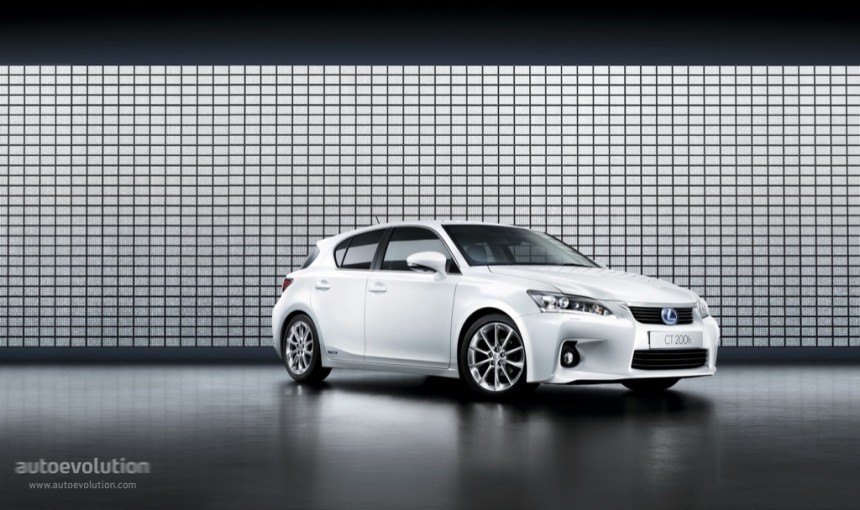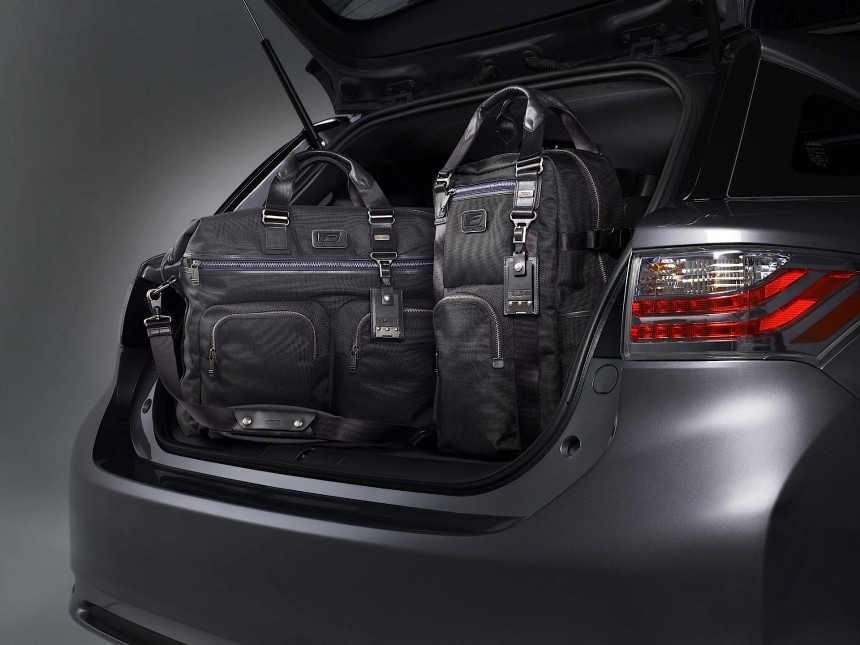Like many other hybrid cars, Lexus offers the option to drive the CT200h in EV mode, although under certain conditions. This is one of the most appreciated features of this premium compact hatchback while trying to sneak in on your driveway when returning home in the early hours.
Toyota already had a decade of experience with hybrid vehicles. First, it built hundreds of thousands of the Prius before daring and launching a premium compact hatchback with a gasoline-electric drivetrain. And that was the Lexus CT200h introduced at the 2010 Geneva Motor Show in Europe. Apart from being a very fuel-efficient vehicle for its times, it also featured an EV-driving mode, meaning that the internal combustion engine was stopped and only electrons were moving the car.
To understand how this thing works, you should understand the tec under the car's skin. In the CT200h, Toyota installed a 1.8-liter, Atkinson-cycle engine. It was connected via a wet-clutch to a 42kW (58 hp) starter-generator. These two were linked via a planetary gear to a 60 kW(80 hp) motor. The electric system was fed by a 202 volts, 27kWh battery pack placed behind the rear seats.
Toyota named this system of starter-generator and electric motor setup an eCVT, even though it could hardly be considered a continuously variable transmission, at least not in the traditional ways as other CVTs worked. For instance, one of its main advantages over Honda's system was that the IAC could have been disengaged so it could be shut down. Thus, when the internal combustion unit wasn't needed, the car's computer cut it off, and the vehicle acted like an EV.
So, let's consider that you don't want to wake up your family when stopping in front of the house, and you want to make that as smooth as possible. But first, you need to know that the car can run in EV-mode for a maximum of 2 kilometers (1.24 miles) with the battery fully charged. So, you have to have that filled before switching to EV-mode.
Once charged, if you're driving at speeds above 45 kph (28 mph), your engine will keep running. Just don't force the accelerator, or the electric motor will kick in to help, thus depleting the battery. Instead, gently apply the throttle if you need to accelerate until you're about one mile before your home. You might go like that until you're just one block away. Then, briskly remove your foot from the accelerator and press the EV button next to the drive selector. That will put the car into EV-mode.
To drive it as an EV, you'll have to keep the speed below 45 kph (28 mph). 25 mph (40 kph) will be safer. After all, it's a residential area; you are just around the corner, so you don't need speed. Gently apply the throttle and try to keep a steady pace. Your car will act like an electric vehicle. Furthermore, since the CT200h was made before the regulations of artificial noises mandatory for Evs, it won't emit any sounds other than the tires rolling on the pavement.
Suppose you want to use that EV mode during your daily commute. You have to act slightly differently. First, you must keep the car's speed below 45 kph (28 mph). In heavy traffic, that shouldn't be a problem. You'll stroll through traffic at the same speed as the Charger next to you. If you need to go uphill, the engine will kick in to provide additional power if required. If you are approaching a stop light that's about to go red, don't accelerate. Release the right pedal and, if necessary, gently press the brakes. Thus, the car will slow down using the regenerative system that will send more electricity into the battery. Also, try to avoid commuting with the trunk full of unnecessary items such as the kids' bicycles or the load for the laundry. Go as light as you can. Stuff forgotten in the luggage compartment will definitely cut down the range.
Keep your tires inflated at the recommended pressure since lower values will increase rolling resistance. Also, don't overinflate them since the tires will have a smaller contact patch. That will help the car's efficiency, but it will also increase the car's stopping distance. Last but not least, try to adapt to the traffic flow, so you don't have to stoop too often since it is harder for the motor to beat the car's inertia to push it forward than to keep it at a certain speed.
To understand how this thing works, you should understand the tec under the car's skin. In the CT200h, Toyota installed a 1.8-liter, Atkinson-cycle engine. It was connected via a wet-clutch to a 42kW (58 hp) starter-generator. These two were linked via a planetary gear to a 60 kW(80 hp) motor. The electric system was fed by a 202 volts, 27kWh battery pack placed behind the rear seats.
Toyota named this system of starter-generator and electric motor setup an eCVT, even though it could hardly be considered a continuously variable transmission, at least not in the traditional ways as other CVTs worked. For instance, one of its main advantages over Honda's system was that the IAC could have been disengaged so it could be shut down. Thus, when the internal combustion unit wasn't needed, the car's computer cut it off, and the vehicle acted like an EV.
So, let's consider that you don't want to wake up your family when stopping in front of the house, and you want to make that as smooth as possible. But first, you need to know that the car can run in EV-mode for a maximum of 2 kilometers (1.24 miles) with the battery fully charged. So, you have to have that filled before switching to EV-mode.
To drive it as an EV, you'll have to keep the speed below 45 kph (28 mph). 25 mph (40 kph) will be safer. After all, it's a residential area; you are just around the corner, so you don't need speed. Gently apply the throttle and try to keep a steady pace. Your car will act like an electric vehicle. Furthermore, since the CT200h was made before the regulations of artificial noises mandatory for Evs, it won't emit any sounds other than the tires rolling on the pavement.
Suppose you want to use that EV mode during your daily commute. You have to act slightly differently. First, you must keep the car's speed below 45 kph (28 mph). In heavy traffic, that shouldn't be a problem. You'll stroll through traffic at the same speed as the Charger next to you. If you need to go uphill, the engine will kick in to provide additional power if required. If you are approaching a stop light that's about to go red, don't accelerate. Release the right pedal and, if necessary, gently press the brakes. Thus, the car will slow down using the regenerative system that will send more electricity into the battery. Also, try to avoid commuting with the trunk full of unnecessary items such as the kids' bicycles or the load for the laundry. Go as light as you can. Stuff forgotten in the luggage compartment will definitely cut down the range.





















